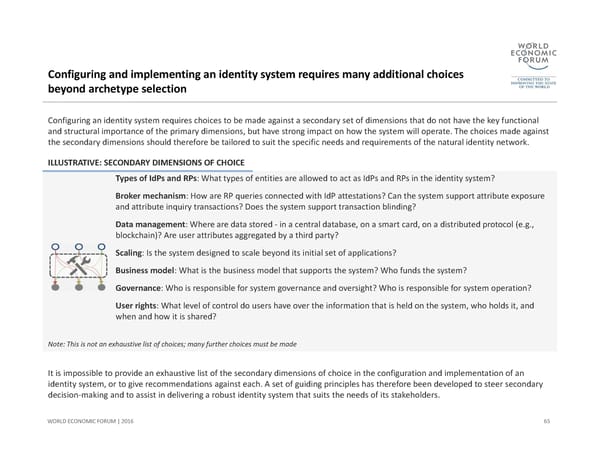ILLUSTRATIVE: SECONDARY DIMENSIONS OF CHOICEConfiguring and implementing an identity system requires many additional choices beyond archetype selection 65 Configuring an identity system requires choices to be made against a secondary set of dimensions that do not have the key functional and structural importance of the primary dimensions, but have strong impact on how the system will operate. The choices made against the secondary dimensions should therefore be tailored to suit the specific needs and requirements of the natural identity network. Note: This is not an exhaustive list of choices; many further choices must be madeWORLD ECONOMIC FORUM | 2016 Types of IdPs and RPs:What types of entities are allowed to act as IdPs and RPs in the identity system? Broker mechanism:How are RP queries connected with IdP attestations? Can the system support attribute exposure and attribute inquiry transactions? Does the system support transaction blinding? Data management:Where are data stored ‐ in a central database, on a smart card, on a distributed protocol (e.g., blockchain)? Are user attributes aggregated by a third party? Scaling:Is the system designed to scale beyond its initial set of applications? Business model:What is the business model that supports the system? Who funds the system? Governance:Who is responsible for system governance and oversight? Who is responsible for system operation? User rights:What level of control do users have over the information that is held on the system, who holds it, and when and how it is shared? It is impossible to provide an exhaustive list of the secondary dimensions of choice in the configuration and implementation of an identity system, or to give recommendations against each. A set of guiding principles has therefore been developed to steer secondary decision‐making and to assist in delivering a robust identity system that suits the needs of its stakeholders.
 A Blueprint for Digital Identity Page 65 Page 67
A Blueprint for Digital Identity Page 65 Page 67